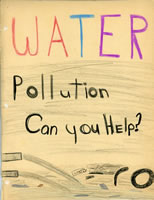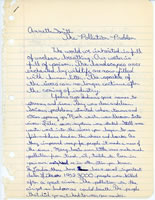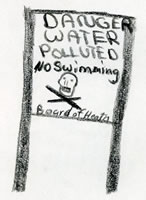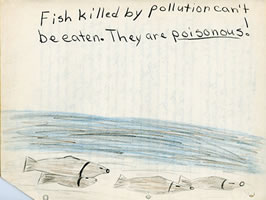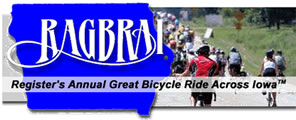Annie's Inquiry
Look at the life of Annette as she grow up as an information inquirer.
Annie in Primary School (Grades K-3): 1964-1967
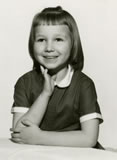 Annie's what people used to call a "tom boy". She loves being outdoors. Born while her father is in the Air Force, Annette spends her early years living in Iowa, California, Mississippi, Arizona, Utah, Kentucky, and New York all by third grade. Whether playing on a beach in California or Mississippi, the red rocks of the Southwest, the woods of New York, or her grandparent's farm in Iowa, she spends more time barefoot than wearing shoes.
Annie's what people used to call a "tom boy". She loves being outdoors. Born while her father is in the Air Force, Annette spends her early years living in Iowa, California, Mississippi, Arizona, Utah, Kentucky, and New York all by third grade. Whether playing on a beach in California or Mississippi, the red rocks of the Southwest, the woods of New York, or her grandparent's farm in Iowa, she spends more time barefoot than wearing shoes.
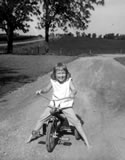
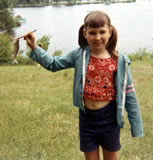
Her parents always made Annette aware of the world around her through vacations and trips to the library to explore the world of reading. She recorded the places she'd lived on a wall map in her bedroom.
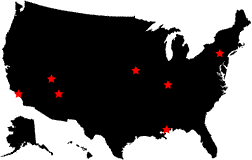
Questioning and Exploration
Annie first hears the word "pollution" in primary school while living in New York in the mid 1960s. Air and water pollution are becoming an increasing concern in this industrial state. Annie lives across the street from a huge electrical sub-station and hears the hum of electricity whenever she leaves the house. Down the road is a salvage yard filled with old crates, boxes, and junk that is surrounded by a dirty creek and small woods. Since her only sibling is much younger, Annie spends most of her time exploring the neighborhood on her own. She's an explorer and spy inventing stories and adventures.
Annie is excited to see a film projector in the classroom. The teacher shows a public service announcement film from the Keep America Beautiful campaign featuring Suzie Spotless chastising her father for littering.
Click the still image from the PSA (above) to learn more about this campaign and view the video.
Annie's teacher writes the word "pollution" on the chalkboard. She says that it's a big word, but an important idea. Then, asks the class to write all the words they can think of to describe pollution. Annie writes:
- dirty
- trash
- littering
- smelly
- bad
Annie has many questions about pollution. She wonders if there is pollution in her neighborhood. Her teacher asks her to write down her questions.
- What is pollution?
- Is pollution like litter?
- Is there pollution in our neighborhood?
- Why do people make things dirty?
- Why don't people clean things up?
Before recess, Annie looks up the word "pollution" in the classroom dictionary. It says "the act or process of polluting, especially the contamination of soil, water, or the atmosphere by the discharge of harmful substances." She then looks up "polluting," "contamination," "harmful," and "substances." Annie adds these words to her word list, but she is a little overwhelmed and confused. She thought pollution was just littering, like when people throw trash out the car window.
After school, Annie runs home and looks up all the words on her list in the World Book Encyclopedia. She determines that some words are more effective than others. For example, dirty, bad, and smelly provided poor results. She concludes that "trash," "litter," and "pollution" are the best, so she puts stars next to these words. She discovers that there are different kinds of pollution such as air pollution and water pollution. She adds questions about air and water pollution to her list.
The next day, Annie goes to the school library and asks the librarian if there are any books on pollution. The librarian shows Annie how to use the card catalog. Using the starred items from her list, she looks up "trash," "litter," and "pollution." There are only a few books and they all look difficult to read. The school librarian provides Annie with some reading strategies for helping to choose books at her reading level. Annie spends most of her time looking at photographs. The librarian directs her to the captions found with the photographs. The pictures show dirty water and smoky sky.
The librarian (instructional specialist) suggests that Annie could use the Reader's Guide to Periodicals to locate magazine articles on pollution. Annie quickly applies the words that yielded successful results when using the card catalog to the Reader's Guide. She's thrilled to find a recent article in National Geographic. Again, the reading is difficult, but the photographs are worth 1000 words.
Assimilation & Inference
Before reading the encyclopedia and browsing the print resources, Annie thought pollution was just trash or litter you find along the sidewalk or the road. Her reading and thinking has helped her refine her definition of pollution. In the past when she looked out the window, she saw only houses, trees, and sidewalks. Now when she goes outside, she sees pollution everywhere.
 Annie writes in her diary about all the pollution she sees between her home and her friend Pat's house:
Annie writes in her diary about all the pollution she sees between her home and her friend Pat's house:
- There's oil spots on the driveway.
- The sky is not clear, it looks a little brown.
- There are cigarette butts and gum on the sidewalk.
- There's a paper cup and paper sack in the street.
- There's stuff hanging off the water drain in the street. It looks like part of an old shirt.
As an emerging student information scientist, Annie is beginning to see the world differently as a result of her investigation. Next, she begins to apply this knowledge to make decisions.
Annie asks her parents why people pollute. They say that people are often too lazy find a trash can. Annie asks how the water and air gets so dirty. Her parents talk about hazardous chemicals from heavy industry contaminating the air and water. Annie's eyes glaze over, she goes to her bedroom, and looks up the words "hazardous" and "chemical" in the dictionary. The dictionary says a chemical is "a substance with a distinct molecular composition that is produced by or used in a chemical process" and hazardous means "marked by danger; perilous." Annie wonders why people would knowingly put bad things in the air and water.
 Over the next several days, everything Annie encounters seems connected to her of the project. A magazine advertisement (Click the ad on the right to see a larger version) convinces Annie to take action. As part of an art project, she creates a poster highlighting all the pollution in the neighborhood. The caption reads "Stop Our Schenectady (SOS) Pollution. Every litter bit hurts YOU." She uses the poster to talk her friends into cleaning up the trash in the community. As they clean up, the children begin to realize that they are only making a small impact. They are able to clean up the trash, but quickly realize that this won't impact the larger air and water pollution problems. Annie still has a limited understanding of the role of economics, regulations, and politics in environmental issues.
Over the next several days, everything Annie encounters seems connected to her of the project. A magazine advertisement (Click the ad on the right to see a larger version) convinces Annie to take action. As part of an art project, she creates a poster highlighting all the pollution in the neighborhood. The caption reads "Stop Our Schenectady (SOS) Pollution. Every litter bit hurts YOU." She uses the poster to talk her friends into cleaning up the trash in the community. As they clean up, the children begin to realize that they are only making a small impact. They are able to clean up the trash, but quickly realize that this won't impact the larger air and water pollution problems. Annie still has a limited understanding of the role of economics, regulations, and politics in environmental issues.
Reflection
Annie has grown as a student information scientist.
Skills. Annie feels like she is becoming a better user of the dictionary and encyclopedia. She understands the differences between these two reference tools. She can use the card catalog and Reader's Guide to Periodicals to locate relevant books and periodicals. She has also learned the importance of good search terms and how to refine searches based on experience. In addition, she sees value in defining unfamiliar terms and exploring related terms. She understandings how to select age-appropriate books and how to deal with books that are above her reading level. She also sees the value of approaching instructional specialists and others for assistance.
Strategies and Scaffolding. Annie understandings the value of brainstorming words, creating and refining lists of questions, and using a diary to record thoughts. She also sees the importance of a quality communication device such as a poster to help persuade her friends to take action.
Realizations. Annie's new understanding of pollution makes her both happy and sad. She feels good after helping to clean up her neighborhood. However she has also discovered that there are some aspects of the pollution issue that are beyond her control. She had many questions that she was not able to answer. In the future, this realization will help her make connections between the choices she makes and the impact these decisions have on the environment.
Standards
Information Literacy Standards Indicators (Selected from Information Power, AASL, 1998)
- Recognizes the need for information.
- Formulates questions based on information needs.
- Seeks information related to various dimensions of personal well-being.
- Develops creative products in a variety of formats.
Indiana Content Standards
- Raise questions about the natural world (K).
- Draw pictures and write words to describe objects and experiences (K).
- Observe, describe, draw, and sort objects carefully to learn about them (1).
- Investigate and make observations to seek answers to questions about the world (1).
- Define and give examples of rules and laws (1).
- Use tools to investigate, observe, measure, design, and build things (2).
- Recognize and describe ways that some materials can be used over again such as recycled paper, cans, and plastic jugs (2).
- Keep and report records of investigations and observations using tools such as journals, charts, graphs, and computers (3).
- Discuss the results of investigations and consider the explanations of others (3).
- Describe how discarded products contribute to the problem of waste disposal and that recycling can help solve this problem (3).
- Explain the consequences of violating laws (3).
Times Have Changed
It's been forty years since Annie's experience. In many ways a child's experience today would be similar. For example, the importance of identifying and applying good search terms and strategies remains essential regardless of whether the child is using a paper-based card catalog or an electronic version.
If Annie's experiences were to take place today, she would have many more tools available for exploration and creation. On the other hand, all these resources may also have distracted her from the acquisition of important reference skills. For example, many more books are available for children on the topic of pollution and environmental awareness than in the 1960s. In addition, websites contain text, graphics, audio, and video directed specifically at children and young adults. These age-appropriate resources may have eliminated some of Annie's frustrations and misunderstandings. However, they may not have provided the challenge necessary to encourage skill development in areas such as looking up unfamiliar words. In addition, Annie was forced to make her own connections independently rather than reading the answers.
In today's environment, Annie may have used technology tools for producing her poster and a digital camera to record "before" and "after" photographs of her community cleanup.
Related Children's Resources
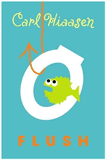 Base, Graeme. The Sign of the Seahorse : A Tale of Greed and High Adventure in Two Acts. - coral reef pollution
Base, Graeme. The Sign of the Seahorse : A Tale of Greed and High Adventure in Two Acts. - coral reef pollution- Base, Graeme. The Water Hole. Harry N Abrams. - water conservation
- Caduto, Michael. Keepers of the Earth: Native American Stories and Environmental Activities for Children (Keepers of the Earth). Fulcrum Publishing, 1999.
- Cherry, Lynne. The Great Kapok Tree: A Tale of the Amazon Rain Forest. - rainforest
- Cherry, Lynne. A River Ran Wild. - ecology
- Cherry, Lynne. The Shaman's Apprentice: A Tale of the Amazon Rain Forest. - rainforest
- Fleischman, Paul. Seedfolks. - urban garden
- Geisel, Theodor Seuss. The Lorax. Random House, 1971. - ecology
- George, Jean Craighead. Eco Mystery Series.
- Gibbons, Gail. Recycle!, 1996. - recycle
- Harlow, Rosie. Garbage and Recycling, 2002.
- Hiaasen, Carl. Flush. Knopf Books for Young Readers, 2005. - water pollution
- Hiaasen, Carl. Hoot. Knopf Books for Young Readers, 2004. - endangered animals
- McDonald, Megan. Judy Moody Saves the World, 2002. - recycling
- Showers, Paul. Where Does the Garbage Go? HarperTrophy, 1994. - recycling
- Strauss, Rochelle. Tree of Life: The Incredible Biodiversity of Life on Earth, 2004. - biodiversity
Annie in Intermediate School (Grades 4-6): 1968-1970
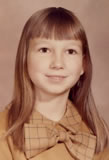 By the late 1960s Annie has moved to the Iowa and is attending intermediate school.
By the late 1960s Annie has moved to the Iowa and is attending intermediate school.
She still loves the adventure whether it's a hike in the woods or her favorite adventure books: My Side of the Mountain by Jean Craighead George which takes her to the mountains and From the Mixed-up Files of Mrs. Basil E. Frankweiler by EL Konigsburg which takes her inside the Metropolitan Museum of Art.





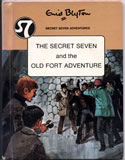 Maintaining her own library in the basement including spine labels, checkout cards, date stamps, and a card catalog, Annette catalogs the family dictionary, encyclopedias, magazines, and books. Like many girls her age, her personal library has many Nancy Drew books and other adventure series.
Maintaining her own library in the basement including spine labels, checkout cards, date stamps, and a card catalog, Annette catalogs the family dictionary, encyclopedias, magazines, and books. Like many girls her age, her personal library has many Nancy Drew books and other adventure series.
Annette creates a secret club based on the Secret Seven mystery series by Enid Blyton and invents codes, languages, rituals, and guidelines for spying on adults. She reads books about invisible ink, magic tricks, and solving mysteries.
Questioning & Exploration
 Annie has grown increasingly concerned about the future of the the world and particularly the environment. She's active in Campfire Girls and enjoys spending time outdoors. Annie is aware of the nature around her including the local plants and animals. Although she hates to weed, she enjoys being involved with the family garden of flowers, beans, corn, carrots, tomatoes, cucumbers, and radishes. Through these experiences, she learns the importance of water and soil quality.
Annie has grown increasingly concerned about the future of the the world and particularly the environment. She's active in Campfire Girls and enjoys spending time outdoors. Annie is aware of the nature around her including the local plants and animals. Although she hates to weed, she enjoys being involved with the family garden of flowers, beans, corn, carrots, tomatoes, cucumbers, and radishes. Through these experiences, she learns the importance of water and soil quality.
Annie also enjoys natural crafts such as making shadow boxes filled with seeds, woodworking, and recycling household materials in artwork.
One day she reads an issue of her dad's U.S. News and World Report magazine that is filled with articles about legislative issues and growing concerns about pollution. Television news reports highlight the water pollution issues facing the Great Lakes and the smog hazards in New York City and Los Angeles.


When asked to write a report on a science topic, she immediately chooses the topic of pollution.
She pours over the World Book Encyclopedia and waits each year for The World Book Year Book to arrive hoping that it will contain the answers. She fears that pollution will kill all the plants and animals. She wonders what people will eat if all the food is contaminated.
Since her pollution project a few years ago, Annie's vocabulary has expanded. Her new list of pollution words includes: chemical spill, hazardous waste, contamination, poison, taint, harmful, and carcinogen.
Annie begins her quest by generating a list of questions. She quickly eliminates the low level questions she can already answer and selects the following three questions as her focus.
- Has there always been pollution?
- When and where did the problem start?
- Why are people so interested in pollution today if they didn't care in the past?
Annie goes to the school library to find books and magazines that might shed light on this growing national issue. She finds more books on the topic than she did a few years ago. Many of them have pretty new covers, but contain sad photographs of filthy water and dead animals. As suggested by her teacher, Annie starts a new page of notes for each of her three questions. Annie loves her new colored marker pens and selects a different color for each page. She also creates a separate page to record all the materials she's using including books and magazines. A worksheet provided by her teacher is used to ensure that she properly cites each source.
Based on her initial exploration, Annie becomes overwhelmed with information. Although she's collected information to address her questions, she's interested in the larger issue of pollution and is having a hard time deciding what to do next. The librarian notes her frustration and talks with her about the options. By helping Annie reflect on her progress and interests, the instructional specialist helps her prioritize her goals for the project. Annie decides that she can't deal with all the types of pollution at once. She decides to narrow her focus to water pollution.
Next, Annie brainstorms new questions specifically aimed at water pollution.
- Is most of the pollution around cities and industry?
- What kinds of pollution are found in water?
- Where does this waste come from?
- Why do sewer systems dump waste into the waterways?
- Are chemicals are poisoning plants and animals?
- What plants and animals are being poisoned?
She jumps into the information with renewed interest, but again is overwhelmed by the wealth of information. For a second time, she narrows her topic. This time Annie focuses on the history, causes, and effects of water pollution.
Assimilation & Inference
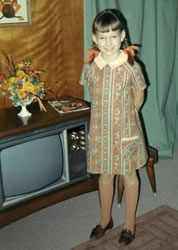 As she collects information, Annie find that visuals help her remember key ideas and see relationships. She creates a timeline to trace the history of water pollution and gain a perspective on time. A cause and effect chart is used to record connections between the major water pollution issues and their impact on the environment. In addition, Annie develops a sketchbook of drawings inspired by her project. She quickly realizes that she'll have much more than the required three-page paper. She's excited about her progress and decides to keep organizing and building her resources, then go back later to write the final report.
As she collects information, Annie find that visuals help her remember key ideas and see relationships. She creates a timeline to trace the history of water pollution and gain a perspective on time. A cause and effect chart is used to record connections between the major water pollution issues and their impact on the environment. In addition, Annie develops a sketchbook of drawings inspired by her project. She quickly realizes that she'll have much more than the required three-page paper. She's excited about her progress and decides to keep organizing and building her resources, then go back later to write the final report.
As she revisits her questions, notes, and visuals, she begins to see a pattern. Suddenly she makes a breakthrough in her thinking. Drawing attention to water pollution will not cause it to stop. Water pollution can be cleaned up, but it will continue for generations unless the conditions that cause water pollution are eliminated. People are the root cause of pollution. They have to be convinced to stop polluting.
After this revelation, she was ready to write and submit her short report. She must read her report aloud in class, so she wears her new dress made by her mother and her favorite penny loafers (see photo on right).
Samples from her original report can be seen below. Click the visuals below for a larger version.

After the project, Annie talks her parents into putting a bumper sticker on their Volkswagen Beetle from the USDA Forest Service campaign, "Give a Hoot. Don't Pollute."
Reflection
Annie is no longer a novice student information scientist. Although her skills must still be refined, she's able to apply existing skills and seek help when necessary.
Skills. Annie's increased vocabulary has allowed her to more easily read and understand the technical information related to her topic. These words have also helped Annie express her ideas in much more exact ways.
Scaffolding. Annie is beginning to apply strategies to the organization of information. Although she uses the technique that her teacher recommended of taking notes on separate pieces of paper, she incorporates her own strategy of color coding ideas. Annie uses the worksheet provided by her teacher as a guide for citing sources. Having learned to create timelines and cause/effect charts in earlier projects, she applies these techniques here. She enjoys drawing and views her sketchbook as a way to be creative while still focusing on work. All of these mechanisms for organization of information provide an environment conducive to assimilation and inference. It's unlikely that Annie's breakthrough would have happened without these transformational scaffolds.
Strategies. Rather than simply tell Annie to "narrow her topic," the instructional specialist guided her through a reflective process that helped her determine a focus for her project. By teaching her the thinking process behind narrowing a topic, Annie was able to do it again independently.
Realizations. Annie is beginning to recognize that being an information scientist goes beyond what is learned in school or required for a school report. She's started to enjoy the satisfaction of continuing beyond the requirements of a class in order to reach a personal goal or insight.
Standards
Information Literacy Standards Indicators (Selected from Information Power, AASL, 1998)
- Identified a variety of potential sources of information.
- Determines accuracy, relevance, and comprehensiveness of information.
- Selects information appropriate to the problem or question at hand.
- Organizes information for practical application.
- Produces and communicates information and ideas in appropriate formats.
- Designs, develops, and evaluates information products and solutions related to personal interests.
- Is competent and self-motivated reader.
- Develops creative products in a variety of formats.
Indiana Content Standards
- Explain that clear communication is an essential part of doing science (4).
- Explain how some products and materials are easier to recycle than others (4).
- Support statements with facts found in print and electronic media, identify the sources used, and expect others to do the same (4).
- Identify better reasons for believing something than "Everybody knows that.." or "I just know" and discount such reasons when given by others (4).
- Begin to evaluate the validity of claims based on the amount and quality of the evidence cited (5).
- Explain that technology extends the ability of people to make positive and/or negative changes in the world (5).
- Explain how the solution to one problem, such as the use of pesticides in agriculture or the use of dumps for waste disposal, may create other problems (5).
- Explain that in any particular environment, some kinds of plants and animals survive well, some do not survive as well, and some cannot survive at all (5).
- Give examples of different ways scientists investigate natural phenomena and identify processes all scientist use (6).
- Identify places where scientists work (6).
- Organize information in simple tables and graphs and identify relationships they reveal (6).
- Explain that fresh water, limited in supply and uneven in distribution, is essential for life and also for most industrial processes. Understand that this resource can be depleted or polluted, making it unavailable or unsuitable for life (6).
- Identify, explain, and discuss some effects human activities, such as the creation of pollution, have on weather and the atmosphere (6).
- Explain that human activities have changed the capacity of the environment to support some life forms (6).
Times Have Changed
Over the past thirty years, access to information has changed dramatically. Today, you can go to the National Forest Service website and explore many materials for children including reading an online book on environmental concepts featuring Woodsy Owl from "Give a Hoot. Don't Pollute" fame.
Today, it's possible for students to go to the U.S. Environmental Protection Agency and learn about specific issues and collect data. There's even a section specifically geared to Elementary, Middle, and High School students.
Since the materials used in Annie's project came from the school library, they had been pre-selected. Although it's possible that some bias existed, it was much less of a concern before introduction of the Internet.
Although it has always been important for students to consider the authority and bias of resources, this is particularly true with the many perspectives and political views presented in websites. Some websites make their perspective very clear. For example the Earth Justice website states that they are "non-profit public interest law firm dedicated to protecting... a healthy environment. We bring about far-reaching change by enforcing and strengthening environmental laws on behalf of hundreds of organizations and communities."
On the other hand, it's not always easy for students to differentiate between fact and opinion. For instance, many non-profit organizations claim to not participate in lobbying activities. However when you look at their website FAQs, they do have a political agenda with a very specific perspective.
In many ways, the Internet would have expanded her interests even further. She loved the books by Jean Craighead George and EL Konigsburg and would have enjoyed learning more about these authors through their websites.
Technology tools would make Annie's visuals easier to create and more appealing. For example, Timeliner and Inspiration are two software packages that would help Annie construct diagrams and concept maps.
Related Resources
- Air Defenders (http://www.airdefenders.org/)
- E Magazine (http://www.emagazine.com/)
- Earth & Sky (http://www.earthsky.org/) Example - Rain, Snow and Pollution & Air Pollution
- Envirolink (http://www.envirolink.org/)
- EElink (NAAEE) (http://eelink.net/)
- Geography Action from National Geographic (http://www.nationalgeographic.com/geographyaction/habitats/)
- Watershed TV (http://www.greentreks.org/watershedstv/index.asp)
- Yes! Magazine (http://www.yesmagazine.org/)
Annie in Middle School: 1971-1973
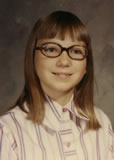 It's the early 1970s and Annie is attending a new middle school with an educational philosophy focusing on interdisciplinary approaches to learning.
It's the early 1970s and Annie is attending a new middle school with an educational philosophy focusing on interdisciplinary approaches to learning.
With the recent moon landing on July 20, 1969, Annette's interest in space exploration is at a high. Seeing Neil Armstrong's first steps on the moon kept Annette glued to the television and closely following the space program.
Click the photo and choose a NASA moon landing video to watch.
 Annette's a huge fan of the Star Trek television series and sees it as a forum for discussion of social issues from race relations to environment issues. Models of the starships hang from her bedroom ceiling. She listens to the music of the movie 2001: A Space Odyssey and imagines the future. Her reading is expanding into many areas including science fiction. She's fascinated by how science fiction reflects social issues.
Annette's a huge fan of the Star Trek television series and sees it as a forum for discussion of social issues from race relations to environment issues. Models of the starships hang from her bedroom ceiling. She listens to the music of the movie 2001: A Space Odyssey and imagines the future. Her reading is expanding into many areas including science fiction. She's fascinated by how science fiction reflects social issues.
Passage of the National Environmental Policy Act (1970), Clean Air Act (1970), and Clean Water Act (1972) has again focused Annie's attention on environmental issues. The first graduating class of the new middle school is planning to plant trees in the school yard in the spring.
Questioning & Exploration
In 1971, the Keep America Beautiful campaign launched another public service announcement. This time featuring Chief Iron Eyes Cody and the tag line, "People Start Pollution. People can stop it." The focus on citizens taking action struck a chord with Annie. She jotted down the address shown at the end of the commercial (99 Park Avenue, New York, New York) and wrote a letter requesting the brochure "71 Things You Can Do To Stop Pollution." The brochure indicated that anyone could become a community volunteer and encouraged people to get involved with Earth Day. She learned that Earth Day was established by Senator Gaylord Nelson of Wisconsin on April 22, 1970.
Click the still image from the PSA (above) to learn more about this campaign and view the video.
Annie began to think about her renewed interest in environmental concerns and jotted down these questions:
- What do these "acts" actually say?
- Will these new laws have a positive impact on the environment?
- What is our community doing to address these issues?
- What can a middle school student do to make a difference?
Annie scheduled a conference to talk to her teacher about ideas for a project related to these topics. The instructional specialist agreed that these questions matched the requirements of a required interdisciplinary project. She asked Annie to learn more about the options before committing to specific end products. They signed an educational contract with the provision that specific products and criteria be added later (see the contract below).
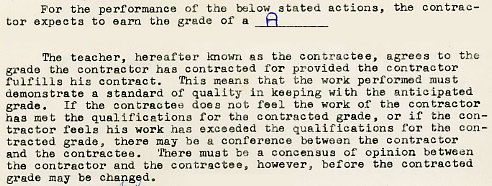
After Annie's experiences becoming overwhelmed with past projects, she has learned to divide her activities into manageable chunks. Annie decides to break her project into three areas: the acts themselves, local government action, and local citizen action.
Annie's first stop is the public library. She felt confident in her general knowledge of the environmental movement, so she didn't spend time exploring secondary sources for background information. She wasn't interested in reading popular magazine articles about the acts, she wanted to read the primary source documents so she skimmed the acts in the Congressional Record. Annie was a little frustrated by all the legal jargon, but she noted the points she thought were most relevant to her local community.
 Annie's father is Deputy Commissioner of Social Services for the State of Iowa. He's also involved in local community activities such as the Parks and Recreation program and even coaches Annie's softball team, the Wrens. He suggests that Annie interview some local government officials about the environmental movement in their community.
Annie's father is Deputy Commissioner of Social Services for the State of Iowa. He's also involved in local community activities such as the Parks and Recreation program and even coaches Annie's softball team, the Wrens. He suggests that Annie interview some local government officials about the environmental movement in their community.
Annie began to brainstorm questions she'd like to ask local government officials. However, she wasn't really sure what government officials would be able to answer questions, so she decided to ask the school media specialist. When Annie described her project, the instructional specialist was excited to become involved. She showed Annie a notebook containing information about the local government structure, names, and phone numbers. In addition, the media specialist suggested that Annie check out an audio recorder to tape the interview. She even gave Annie a handout containing "ten tips for conducting great interviews."
After calling the City Manager's office, Annie was able to schedule an appointment to interview the City Manager as well as a City Council member who was particularly interested in environmental issues. Annie's mother agreed to drive her to the office and provide encouragement. Although Annie was very nervous about the interviews, everything went fine. She never realized how much was involved in running a small city and how many priorities compete for attention. Fortunately, the people she interviewed were well informed and were able to answer most of her questions.
Although Annie was convinced that the local government officials were aware of the implications of the acts, she was less sure of the general public. She decided to do a quick survey to find out how much community members knew about this legislation. She created a short survey with five questions and recruited three of her friends to help her conduct the survey during intermission at the high school basketball game. Since the survey simply involved checking boxes, it was easy to tabulate and analyze. Annie was happy to find that most people had seen the Keep America Beautiful PSA on television and indicated they thought saving the environment was important. However she was disappointed to find that many people weren't aware of the new acts and did very little to save the environment themselves.
Assimilation & Inference
After gathering so much information, Annie decided to spend a weekend organizing and analyzing her materials. Although she felt the city was on track and the general public was aware of the issues, she was disappointed that most people didn't share her passion and commitment to action. She was also concerned that many people weren't aware of the key issues presented in the acts or how they could take action.
Annie decided that the best course of action was to write a letter to the editor providing an overview of the key features of the acts and what every day people could do in the local community. Drawing on ideas from the Keep America Beautiful and suggestions from the local government officials she encouraged people to become involved in local Earth Day activities. Annie carefully quoted the City Manager and City Council member. Before submitting the article, she phoned the City Council member to double-check the quote she planned to use. The Council member was happy to hear about the article and even called a friend at the local newspaper to let them know the article was coming. Annie doesn't know whether it was the Council member's phone call or the quality of her letter that convinced the paper to print her article. However she was thrilled to see her writing published.
 In August of 1973 the Des Moines Register's sponsored the first RAGBRAI, the Register's Annual Great Bicycle Ride Across Iowa. Annette decided to raise awareness of the environmental movement by biking a segment of the ride (photo on left, front bike). The bike ride brought attention riding bikes rather than cars to save gas. Since that time, RAGBRAI has become the longest, largest and oldest bicycle touring event in the world.
In August of 1973 the Des Moines Register's sponsored the first RAGBRAI, the Register's Annual Great Bicycle Ride Across Iowa. Annette decided to raise awareness of the environmental movement by biking a segment of the ride (photo on left, front bike). The bike ride brought attention riding bikes rather than cars to save gas. Since that time, RAGBRAI has become the longest, largest and oldest bicycle touring event in the world.
Click the RAGBRAI visual to learn more about this popular bike ride.
Reflection
Annie is continuing to grow as a student information scientist.
Skills and Scaffolding. While she once relied primarily on sources such as encyclopedias and nonfiction books for information, she increasingly seeks a variety of resources including primary source documents.
Strategies. Annie is beginning to develop her own style of investigation. For example she's found that dividing her projects into smaller chunks makes them more manageable.
Realization. Annie is growing more confident in asking others for assistance. She recognizes that each person has a unique set of knowledge and skills that can be helpful in different situations.
Standards
Information Literacy Standards Indicators (Selected from Information Power, AASL, 1998)
- Develops and uses successful strategies for locating information.
- Applies knowledge to critical thinking and problem solving.
- Produces and communicates information and ideas in appropriate formats.
- Assesses the quality of the process and products of personal information seeking.
- Respects the principle of equitable access to information.
- Shares knowledge and information with others.
Indiana Content Standards
- Recognize and explain that when similar investigations give different results, the scientific challenge is to judge whether the differences are trivial or significant, which often takes further studies to decide (7).
- Explain why it is important in science to keep honest, clear, accurate records (7).
- Describe that different explanations can be given for the same evidence, and it is not always possible to tell which one is correct without further inquiry (7).
- Explain how engineers, architects, and others who engage in design and technology use scientific knowledge to solve practical problems (7).
- Explain that technology often have drawbacks a well as benefits (7).
- Explain how societies influence what types of technology are developed in used (7).
- Explain that the environment may contain dangerous levels of substances that are harmful to human beings (7).
- Explain that humans help shape the future by generating knowledge, developing new technologies, and communicating ideas to others (8).
- Participate in group discussions on scientific topics by restating or summarizing accurately what others have said, asking for clarification or elaboration, and expressing alternative positions (8).
- Explain that the atmosphere and the oceans have a limited capacity to absorb wastes and recycle materials naturally (8).
- Recognize and describe important environmental legislation such as the Clear Air and Water Act (Environmental Science).
- Understand that as a result of Silent Spring, there are now hundreds of national, state, and local laws that regulate pesticides (Environmental Science).
- Distinguish between the different functions of national and state government within the federal system (8).
- Examine various social influences that can lead to immediate and long-term changes (Sociology).
Times Have Changed
Many resources that have been difficult to locate in the past are now available electronically. For example, some primary sources documents can be found online. This provides a unique opportunity for students to read the original text of laws, transcripts from court cases, and explore raw data sources. For example, the Congressional Record contains the official record of the proceedings and debates of the United States Congress and is published daily.
Many government documents are available. For example, you can read the following US Acts: National Environmental Policy Act of 1969, Clean Air Act (1970, 1990), Clean Water Act (1972, 1977, 2002), and The Endangered Species Act of 1973.
A number of today's technologies would have been helpful for this project. For example, digital technology would provide even more choices in recording the interview of community officials. For example, a small MP3 recorder or camcorder could be used to increase ease of data storage and editing. These could then be integrated into a multimedia presentation or streamed online.
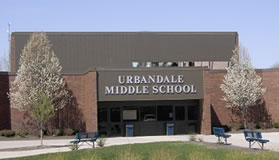 Using a hand-held device could have reduced the paperwork and data collection time involved with Annie's survey.
Using a hand-held device could have reduced the paperwork and data collection time involved with Annie's survey.
Finally, a website or blog could be used to keep interested member of the community up-to-date on changing news and information.
Update
Thirty years later students at UMS are still learning in interdisciplinary teams and caring about the environment.
Annie in High School: 1974-1977
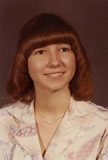 By the time Annie is ready for high school graduation in the mid 1970s, she has become a mature student information specialist. Although she seeks assistance when she has specific questions, she enjoys the challenge of solving her own problems. Her investigations are no longer restricted to class assignments. She applies her skills whenever she is faced with the need for information to solve a problem or make a decision.
By the time Annie is ready for high school graduation in the mid 1970s, she has become a mature student information specialist. Although she seeks assistance when she has specific questions, she enjoys the challenge of solving her own problems. Her investigations are no longer restricted to class assignments. She applies her skills whenever she is faced with the need for information to solve a problem or make a decision.
Annie has combined her interests in the outdoors and music with a passion for the songs of John Denver and the Rocky Mountains. She's also getting more involved with group activities as a member of the girl's football team, band, and drama.



Questioning & Exploration
Annie's Grandpa "Pete" Smith is a farmer in rural Iowa. Below is a Annie's favorite photograph of her Grandpa, dad, and Grandma around 1940.

Annie's Grandpa Smith just found out he doesn't have bursitis of the shoulder, he has cancer. No one seems to know much about it, so it's time for an investigation. Annie likes to initiate an inquiry by listing what she knows and doesn't know. Her chart is shown below:
What I Know |
What I Don't Know |
|
|
A couple of the questions could be addressed immediately by Annie's parents. Grandpa has adrenal gland tumors causing Cushing's Syndrome. They aren't sure about the extent of the cancer or the implications, but the prognosis isn't good. Annie's father noted that a disproportionate number of Iowa farmers die from rare cancers. He wonders about a possible connection between environmental factors such as use of farm chemicals and cancer.
 Having read Silent Spring (1962) by Rachel Carson, I understood the strong connection between chemical pesticides and the environment. Carson asked the question, "can anyone believe it is possible to lay down such a barrage of poisons on the surface of the earth without making it unfit for all life?"
Having read Silent Spring (1962) by Rachel Carson, I understood the strong connection between chemical pesticides and the environment. Carson asked the question, "can anyone believe it is possible to lay down such a barrage of poisons on the surface of the earth without making it unfit for all life?"
Although articles in the World Book Encyclopedia contained some background information about cancer, the information from Annie's parents led to a new series of questions. The next level of investigation required a trip to the school library to address the following questions:
The Cancer
- What is Cushing's Syndrome?
- What is cortisol?
- What are the adrenal glands?
- What is an adrenal glands tumor?
- What are the treatment options?
- What is the prognosis for adrenal cancer?
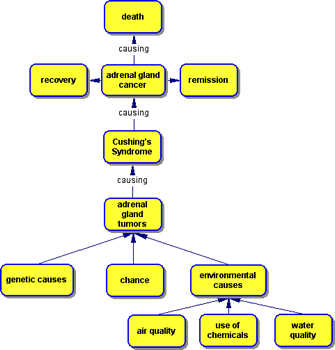 Having already gained background information from the encyclopedia, Annie was ready to examine authoritative medical resources. The school media specialist suggested two excellent medical reference books. She also provided Annie with a vertical file folder containing brochures and other information from the American Cancer Society.
Having already gained background information from the encyclopedia, Annie was ready to examine authoritative medical resources. The school media specialist suggested two excellent medical reference books. She also provided Annie with a vertical file folder containing brochures and other information from the American Cancer Society.
Annie is getting a little confused about what causes what effect. She creates a concept map to visualize the relationships associated with the illness.
The second round of questions satisfied Annie's immediate thirst for answers related to her grandfather's condition. However as she analyzed the information she gathered, a series of much more complex questions emerged. These are listed below:
The Cause
- What causes adrenal gland cancer?
- Do farmers have a higher rate of cancer than the general population? If so, what kinds and why?
- Do environmental factors contribute to cancer? If so, which ones and how?
The Cure
- What constitutes a cancer cure?
- Do any of the treatments lead to a cure?
- What is remission and recovery?
Another trip to the library yielded useful nonfiction books on cancer. Unfortunately some of the best materials weren't available in the school library and had to be ordered through interlibrary loan. Because the school library had a relationship with the local university, Annie was able to order copies of professional journal articles through the university. Unfortunately many of these articles contained information that was beyond Annie's medical expertise. None of the articles described a definitive cause or cure for cancer.
Assimilation & Inference
 After locating, evaluating, reading, and organizing the materials on Cushing's Syndrome and adrenal gland tumors, Annie began to understanding how cancer was connected to other diseases and medical problems. She could also apply this information to her grandfather's situation. Annie created a diagram for herself labeling the parts of the body affected, defining terms, and building an understanding of how the cancer spreads and is treated. However this only addressed the first of the three categories of questions. She still didn't have a firm understanding of the cause or the cure. As she analyzed her notes she found that although doctors understood what was happening in the body, they really had little knowledge of the underlying cause or a permanent cure.
After locating, evaluating, reading, and organizing the materials on Cushing's Syndrome and adrenal gland tumors, Annie began to understanding how cancer was connected to other diseases and medical problems. She could also apply this information to her grandfather's situation. Annie created a diagram for herself labeling the parts of the body affected, defining terms, and building an understanding of how the cancer spreads and is treated. However this only addressed the first of the three categories of questions. She still didn't have a firm understanding of the cause or the cure. As she analyzed her notes she found that although doctors understood what was happening in the body, they really had little knowledge of the underlying cause or a permanent cure.
Annie shared her diagram and thoughts with her parents. With the help of Annie's parents, she developed a short list of questions to ask the doctor. She was both frustrated and gratified to learn that doctor didn't really know much more about causes and cures than she was able to glean from the medical literature. However he was able to validate her conclusions.
The discovery that doctors know very little about the causes and cures for cancers was very disconcerting. Annie decided to conduct further investigations into two areas. First, she sought information about a possible link between cancer and the environmental conditions found on farms. Second, she explored the status of cancer research. She was not able to draw any conclusions. Instead she described the need for future research and vowed to trace progress.
Reflection
Annie has become a mature, student information scientist.
Skills. Annie can see that her questioning skills are maturing. Although she still starts with basic level "what" kinds of questions, her thoughts soon create connections to more complex questions focusing on "how" and "why."
Strategies and Scaffolding. Annie uses a variety of resources including reference materials, professional journals, professional organization documents, as well as personal interviews. She understands the importance of authority and evaluation in materials selection. Annie uses visual tools such as charts, question exploration rings, and diagrams for planning, analysis, synthesis, and communication.
Realization. As Annie matures as a student information scientist, she recognized that all inquiries don't end in a final report or letter grade. Investigations often end in more questions than they answer. However each inquiry refines an information scientist's craft and builds new knowledge that can be applied to future information seeking endeavors.
Standards
Information Literacy Standards Indicators (Selected from Information Power, AASL, 1998)
- Recognizes that accurate and comprehensive information is the basis for intelligent decision making.
- Distinguishes among fact, point of view, and opinion.
- Identified inaccurate and misleading information.
- Integrates new information into one's own knowledge.
- Devises strategies for revising, improving, and updating self-generated knowledge.
- Seeks information from diverse sources, contexts, disciplines, and cultures.
Indiana Content Standards
- Understand that and describe how the maintenance of a relatively stable internal environment is required for the continuation of life and explain how stability is challenged by changing physical, chemical, and environmental conditions, as well as the presence of disease agents (Biology).
- Recognize that and describe how the human immune system is designed to protect against microscopic organisms and foreign substances from outside the body and against some cancer cells that arise within (Biology).
- Understand and explain that the information passed from parents to offspring is transmitted by means of genes which are coded in DNA molecules (Biology).
- Explain that gene mutations can be caused by such things as radiation and chemicals (Biology).
- Trace the relationship between environmental changes and changes in the gene pool (Biology).
- Explain that the amount of life any environment can support is limited by the available energy, water, oxygen, and minerals, and by the ability of ecosystems to recycle the reside of dead organize materials. Recognize, therefore, that human activities and technology can change the flow and reduce the fertility of the land (Biology).
- Describe how agricultural technology requires trade-offs between increased production and environmental harm and between efficient production and social values (Environmental Science).
- Understand and explain that waste management includes considerations of quantity, safety, degradability, and cost (Environment Science).
- Differentiate between natural pollution and pollution caused by humans and give examples of each (Environmental Science).
- Compare and contrast the beneficial and harmful effects of an environmental stressor such as herbicides and pesticides on plants and animals. Give examples of secondary effects on other environmental components (Environmental Science).
- Explain that Rachel Carson's Book Silent Spring explained how pesticides were causing serious pollution and killing many organisms (Environmental Science).
- Understand that as a result of Silent Spring, there are now hundreds of national, state, and local laws that regulate pesticides (Environmental Science).
Times Have Changed
Although the questions and process would remain the same, Annie's access to information would have been much different today. Although the library continues to be a wonderful learning laboratory, the tools and resources have changed dramatically. For example, most vertical file collections have been replaced by website pathfinders designed by school library media specialists to help patrons locate quality online resources such as government and professional organization websites. Today's instructional specialist would have directed Annie to subscription electronic databases for access to endless online medical journals and resources without the need to travel long distances to a university library.
Electronic databases. Annie faced the problem of accessing articles published in professional journals. Today, electronic databases provide quick and easy access to these resources. However Annie noted that access wasn't the only problem. Most articles written for scholarly journals contain medical information beyond her expertise.
Authority. Annie didn't have easy access to professional resources beyond the library or local hospital. Today, the websites of professional organizations and non-profit agencies such as the National Cancer Institute, National Institutes of Health, and American Cancer Society provide endless authoritative contacts and resources. However, these resources must be carefully evaluated. There are many medical websites developed by caring individuals and groups that are not sanctioned and may not be monitored for accuracy.
Support. The Internet is a wonderful tool for making contacts, establishing communications, and sharing news. Very small groups of people can easily connect with each other. For example, Cushing's Syndrome is very rare. It would have been impossible to find a support group in the 1970s. Today people interested in this rare disease can go to the Cushing's Support & Research Foundation website. Today's websites, forums, and blogs provide a voice for discussion and interaction. However they can also be a tool for spreading incomplete or inaccurate information. As a result, the skills of an information scientist in evaluation are more critical than ever.
Technology Tools. Today's technology tools would be useful in helping Annie in visualize her thinking, data organization, and results. For example, Inspiration software can be used to create a question exploration ring.
Click the image below to view a template for a Question Exploration Ring in Inspiration.
Related Resources
- Blondell, Jerome. Epidemiologic Bibliography: Cancer, Pesticides, and Farming. U.S. Environmental Protection Agency, 1988
- Carson, Rachel. Silent Spring. Boston: Houghton Mifflin Company, 1962.
- Davis, Devra. When Smoke Ran Like Water: Tales of Environmental Deception and the Battle Against Pollution. Basic Books, 2002.
- Kennedy, Robert F. Crimes Against Nature: How George W. Bush and His Corporate Pals Are Plundering the Country and Hijacking Our Democracy. HarperCollins, 2004.
- Kimbrell, Andrew. Fatal Harvest: The Tragedy of Industrial Agriculture. Foundation for Deep Ecology, 2002.
- Kubiak, Stanley. Pesticides, Human Health, Research and Cancer: Index of new information with bibliography. ABBE Publishers Association of Washington, 2002.
- Mckibben, Bill. The End of Nature: Tenth Anniversary Edition. Anchore, 1997.
- McPhee, John. The Control of Nature. Farrar, Straus and Giroux.
- Miller, G. Tyler. Living in the Environment: Principles, Connections, and Solutions (14 edition). Brooks Cole, 2004.
- National Wildlife Federation. Pollution: Problems & Solutions. McGraw-Hill, 1998.
- Wargo, John. Our Children's Toxic Legacy: How Science and Law Fail to Protect Us from Pesticides, Second Edition. Yale University Press, 1998.
- Watts, Duncan. Six Degrees: The Science of a Connected Age. W. W. Norton & Company. 2004.
- Wilson, Edward O. The Diversity of Life. W. W. Norton & Company, 1993.
- Wilson, Edward O. The Future of Life. Vintage, 2001.
- Wright, Richard. Environmental Science : Toward a Sustainable Future (9th Edition). Prentice Hall, 2004.
Project Update
Many inquiries last a lifetime. Although Annie's grandfather died a month after her high school graduation, thirty years later she continues to track the research on agricultural lifestyles, environmental hazards such as pesticide use, and cancer through project such as the Agricultural Health Study. Today, her research is conducted online. Below are a couple recent findings:
- A Focus on Farming Health in Iowa in Environmental Health Perspectives Volume 107, Number 3, March 1999
- Agricultural Pesticide Use May Be Associated With Increased Risk of Prostate Cancer from National Institute of Environmental Health Sciences
- Passing Along Pesticides in Environmental Health Perspectives Volume 112, Number 5, April 2004


